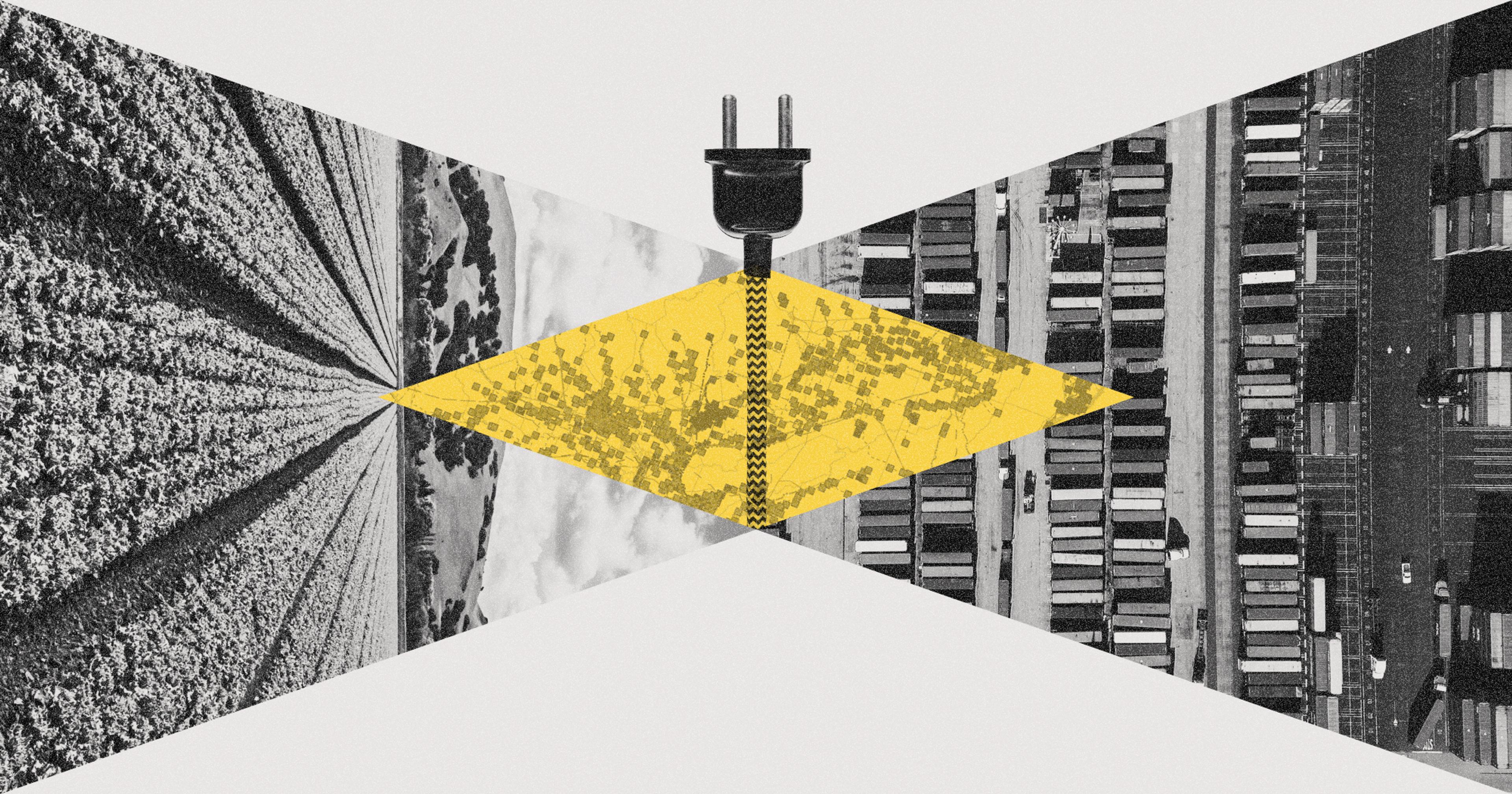State agriculture groups are wary of costly equipment upgrades, lack of rural charging stations, and an aggressive implementation timeline.
California is on a mission to phase out the use of trucks that use fossil fuels and replace them with more environmentally friendly, zero-emission electric vehicles — all within the next couple of decades. The California Air and Resource Board’s (CARB) Advanced Clean Fleet Regulation aims to tackle air pollution and greenhouse gas emissions by transitioning 100% of the state’s medium- to heavy-duty trucks from fossil-fuel to fully electric.
But not everyone is happy with the proposed legislation.
The proposal, which is not yet set in stone, is already causing tension between those who praise the plan for its positive environmental impact and industries that depend on the use of big trucks. California’s farming community — heavily reliant on trucks and other heavy-duty machines to supply more produce than any other state in the country — is particularly wary of the new regulation.
With set implementation dates but uncertainty surrounding necessary infrastructure, industry voices are expressing doubts about the feasibility of a switch to electric vehicles and how it could impact their products and bottom lines.
“Agriculture deals with perishable commodities, so having to incorporate charging time into transportation time would just be very crucial for our product,” said Katie Little, policy advocate for the California Farm Bureau. Electric trucks require longer, much more frequent stops than combustion vehicles — electric trucks typically run around 500 miles before needing a recharge, compared to around 2000 miles on diesel. Thus, Little said there is concern the charging times could negatively impact the transported goods. And while extra travel time are not guaranteed to wilt leafy greens and other perishables, the added hours will surely add higher costs to their transport.
The transportation sector is the highest producer of California’s greenhouse gas emissions and impacts on the ozone — 41% of total statewide emissions.
California is no stranger to sweeping statewide regulations with impacts on both local and national agriculture — consider the state’s differing milk standards and livestock confinement laws. The state ranks number one in agricultural product sales in the country, leaving proposals like this one with broad industry repurcussions.
Despite the concerns, there is no denying the positive impacts the proposal would have on pollution. The transportation sector is the highest producer of California’s greenhouse gas emissions and impacts on the ozone — totaling 41% of total statewide emissions.
In an open letter to CARB, signed by a multitude of agricultural organizations across California, signers aired their unease about the proposed plan. As the letter states, the coalition of organizations has concerns about “vehicle availability (at scale) and supply chain issues that intensify affordability concerns, the necessity to incorporate workable emergency response exemptions, obvious infrastructure readiness questions, regulatory timing and process concerns (including transparency for determining ‘commercially available’ vehicles), and the need for flexible low carbon fuel alternatives, amongst others.”
The proposal sets big goals for implementation, starting over the next decade. Currently, just under 2,000 zero-emission medium- to heavy-duty vehicles are out on California roads — mostly consisting of buses — a far cry from the state’s stated goal of over 500,000 vehicles by 2035, and nearly 1.6 million by 2050. CARB’s proposed regulation would require all new trucks and buses sold in the state to be zero-emissions by 2040.
Opponents of the plan aren’t convinced the infrastructure needed for zero-emission vehicle success will be implemented in time.
Sydney Vergis, division chief at CARB, said a smooth transition will be possible thanks to the previously adopted Advanced Clean Truck Regulation, which required truck manufacturers to create more zero-emission options. There are now over 500 types of electric trucks on the market, which Vergis said should mitigate any complaints on lack of availability.
Under the proposal, any California company’s existing fleets of buses and trucks would also need to undergo a switch away from fossil fuel-burning rigs, eventually requiring the purchase of zero-emission vehicles to replace old trucks and buses by 2042. And for some companies, the deadlines come even sooner.
State agriculture groups argue that the proposal’s deadlines are cause for worry, as they aren’t convinced the infrastructure needed for zero-emission vehicle success will be implemented in time. In order to switch from fossil-fuel-reliant vehicles to electric models, chargers for the vehicles will need to be widely installed, especially in remote regions.
“We are vastly in rural areas, which may mean we’re farther away from charging infrastructure,” said Little. “What does that mean for transportation times and transportation limitations and charging limitations? So, you know, the rural factor is also a big concern. Is it going to affect how we transport our products?”
On the issue of infrastructure, Vergis said the board is cognizant that the changeover to electric is not a switch that’s flipped overnight. The board is working with state agencies and heavy-duty truck manufacturers to make sure that building out the necessary infrastructure gets done statewide.
“California runs a number of incentive programs that are meant to help with that [electric vehicle] purchase price.”
California Assemblywoman Blanca E. Rubio (D) addressed some of the questions that have been coming across her desk in a direct letter to CARB. In the letter, she expressed concern about power grids supporting the chargers — as the state already outsources 30% of its power needs — as well as implementing them in remote areas. “Heavy construction and agricultural equipment service vehicles operated by such fleets also have no ability to charge their vehicles remotely. These vehicles will require high-voltage DC chargers that are unavailable at remote sites and along the highways in convenient locations,” the letter reads.
Upfront costs for new zero-emission vehicles — currently much higher than combustion trucks — are a further sticking point for agricultural businesses worried about already-tight profit margins. To address this, Vergis said the board has options to financially aid farmers and others in need of complying with the regulation. “California runs a number of incentive programs that are meant to help with that purchase price, Vergis said. “This year our funding plan is going to have about $2 billion in investments that really are meant to help with that.”
Meanwhile, environmental groups and residents of highly polluted areas are championing the proposal for its potential impact on public and environmental health. “About 12 million Californians still live in areas with unhealthy air,” said Vergis. In addition to addressing poor health caused by this pollution, the proposal could account for big savings when it comes to health costs.
“The health benefits of the regulation in terms of savings from things like avoided asthma and premature death is quantified at over $57 billion,” she said. Vergis added that the proposal saves cash in other ways, with a $22 billion net cost savings in light of lower maintenance and fuel spending once the vehicles are in use, according to CARB’s analysis.
As far as the fate of the proposal, there are multiple meetings to come before any implementation.
October 27 marked the first public hearing on the plan, where nearly 200 citizens, both for and against the proposal, gathered to discuss its implications. A secondary public hearing is scheduled for the spring. Once the board makes its final decision, the earliest compliance deadline for the proposal would be set for the end of 2023.







